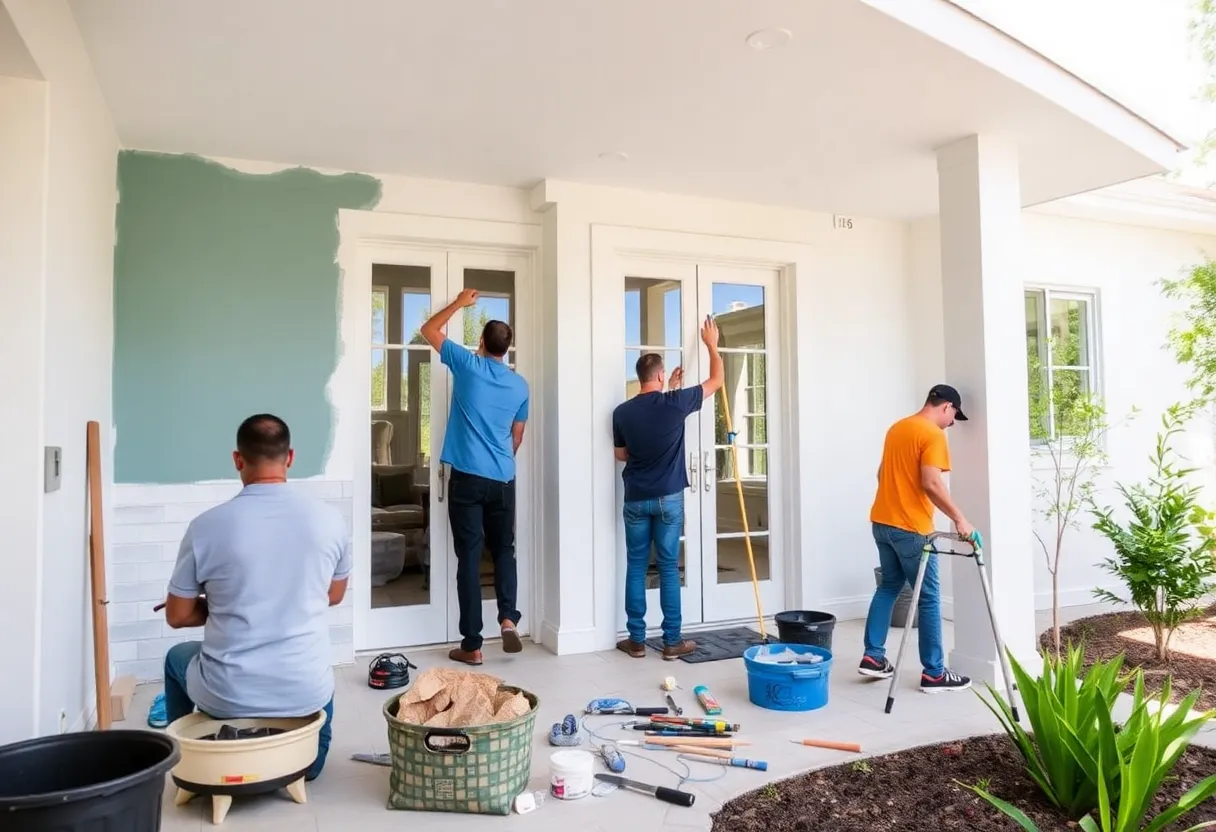How to Create a Budget-Friendly Home Renovation Plan: Essential Strategies for DIYers Embarking on a home renovation project demands careful planning — especially for those aiming to achieve quality results without overspending. Creating a budget-friendly renovation plan requires strategic foresight and disciplined execution. This guide outlines essential strategies that help DIYers maximize their resources, minimize costs, and ensure a successful transformation of their living space. Establish Clear Goals and Priorities Identify the Scope of Renovation The first step involves defining exactly what needs to be renovated. List all areas, from kitchens and bathrooms to bedrooms and outdoor spaces. Differentiate between essential repairs and aesthetic upgrades. Focusing on high-impact projects ensures the renovation addresses critical issues—like structural integrity or long-term durability—without overspending on less necessary aesthetic features. Set Specific and Realistic Goals Establish clear objectives for each area. Instead of a vague desire to “upgrade the kitchen,” specify goals such as replacing outdated cabinets, updating appliances, or repainting walls. This clarity helps in allocating resources effectively, preventing scope creep, and maintaining control over the project. Develop a Detailed Budget Estimate Costs Accurately Research current prices for materials, tools, and services. Use online marketplaces, local suppliers, and community resources to gather data. Include a contingency fund of at least 10-15% of the total budget to account for unforeseen expenses or project changes. Prioritize Expenses Based on Impact and Cost Allocate funds first to essential repairs. For aesthetic enhancements, consider DIY options or delaying certain features until a later phase. Revisit and adjust the budget regularly, especially when costs fluctuate or new needs emerge. Schedule and Timeline Management Create a Realistic Timeline A detailed schedule guides progress and helps in resource planning. Break down the project into stages—demolition, prep, execution, and finishing. Set deadlines for each phase, factoring in availability of materials, weather conditions, and personal availability. Avoid Rushed Decisions Quality is more important than speed. Allocate enough time for each task to prevent costly mistakes and rework. Implement buffer periods to handle unexpected delays effectively. Strategic Material and Tool Selection Opt for Cost-Effective Materials Choose durable, local, and readily available materials that balance cost and longevity. For example, laminate countertops may be cheaper than stone but still offer a modern finish. Leverage sales, bulk purchasing, and discount codes to reduce expenses further. Utilize Basic Tools and DIY Solutions Invest in essential tools—such as drills, saws, and sanders—that can be reused on future projects. Renting specialized equipment for complex tasks can be more economical than purchasing. Research DIY tutorials for creative, low-cost alternatives to professional finishes. Intelligent DIY Strategies Prioritize Tasks Suitable for DIY Work Focus on tasks within your skill set—painting, tiling, installing shelving, or assembling furniture. Avoid tackling complex electrical or plumbing work unless qualified. Know your limitations. When necessary, hire professionals for safety-critical tasks, which ultimately saves money by avoiding costly errors. Gather and Reuse Salvaged or Secondhand Items Look for reusable materials, fixtures, and furniture. Salvage shops, online marketplaces, and community exchanges often offer quality items at a fraction of retail prices. Refurbishing or repurposing existing elements can add character and significantly reduce costs. Implement Cost-Controlling Measures Maintain Strict Purchase Discipline Stick to your shopping list and avoid impulse buys. Review and compare prices before making purchases. Use price tracking tools and wait for sales events to buy materials at reduced prices. Limit Changes and Scope Creep Once planning begins, avoid frequent scope modifications. Changes mid-project often lead to increased expenses and delays. Document all decisions during planning to maintain clarity and control over the scope of work. Effective Project Management Maintain Organized Documentation Keep detailed records of receipts, invoices, and project plans. Use spreadsheets or project management software to track progress and expenses. This organization streamlines decision-making and simplifies financial oversight. Monitor and Adjust Accordingly Regularly evaluate the project’s progress against your timeline and budget. Be flexible to reassess priorities if costs or timelines shift unexpectedly. Adapting plans proactively minimizes disruptions and keeps the project financially viable. Leverage Community Resources and Support Tap Into Local Workshops and DIY Groups Many communities offer free or low-cost classes on home repair skills. Learning new techniques can improve quality and save money. Engaging with DIY groups fosters resource-sharing, advice, and moral support, enhancing project efficiency. Seek Advice From Experienced DIYers Online forums, social media groups, and local communities can provide valuable tips, troubleshooting advice, and recommendations for affordable suppliers. Learning from others’ experiences reduces costly mistakes and accelerates project completion. Final Recommendations for Success Creating a budget-friendly home renovation plan involves meticulous preparation, disciplined execution, and flexible adaptation. Prioritize essential repairs, plan carefully, and leverage DIY skills to maximize the impact of each dollar spent. Maintain ongoing oversight and be willing to adjust plans as necessary. Ultimately, thoughtful planning combined with strategic resource management ensures a successful and economical home transformation.
Author: STAFF HERE WASHINGTON DC
The WASHINGTON DC STAFF WRITER represents the experienced team at HEREWashingtonDC.com, your go-to source for actionable local news and information in Washington, DC, and beyond. Specializing in "news you can use," we cover essential topics like product reviews for personal and business needs, local business directories, politics, real estate trends, neighborhood insights, and regional news affecting the area—with deep expertise drawn from years of dedicated reporting and strong community input, including local press releases and business updates. We deliver top reporting on high-value events such as the National Cherry Blossom Festival, Kennedy Center Honors, and the Washington Auto Show. Our coverage extends to key organizations like the Greater Washington Board of Trade and Destination DC, plus leading businesses in government contracting and technology that power the local economy such as Lockheed Martin and Amazon. As part of the broader HERE network, we provide comprehensive, credible insights into the dynamic landscape of the Washington metropolitan area.





